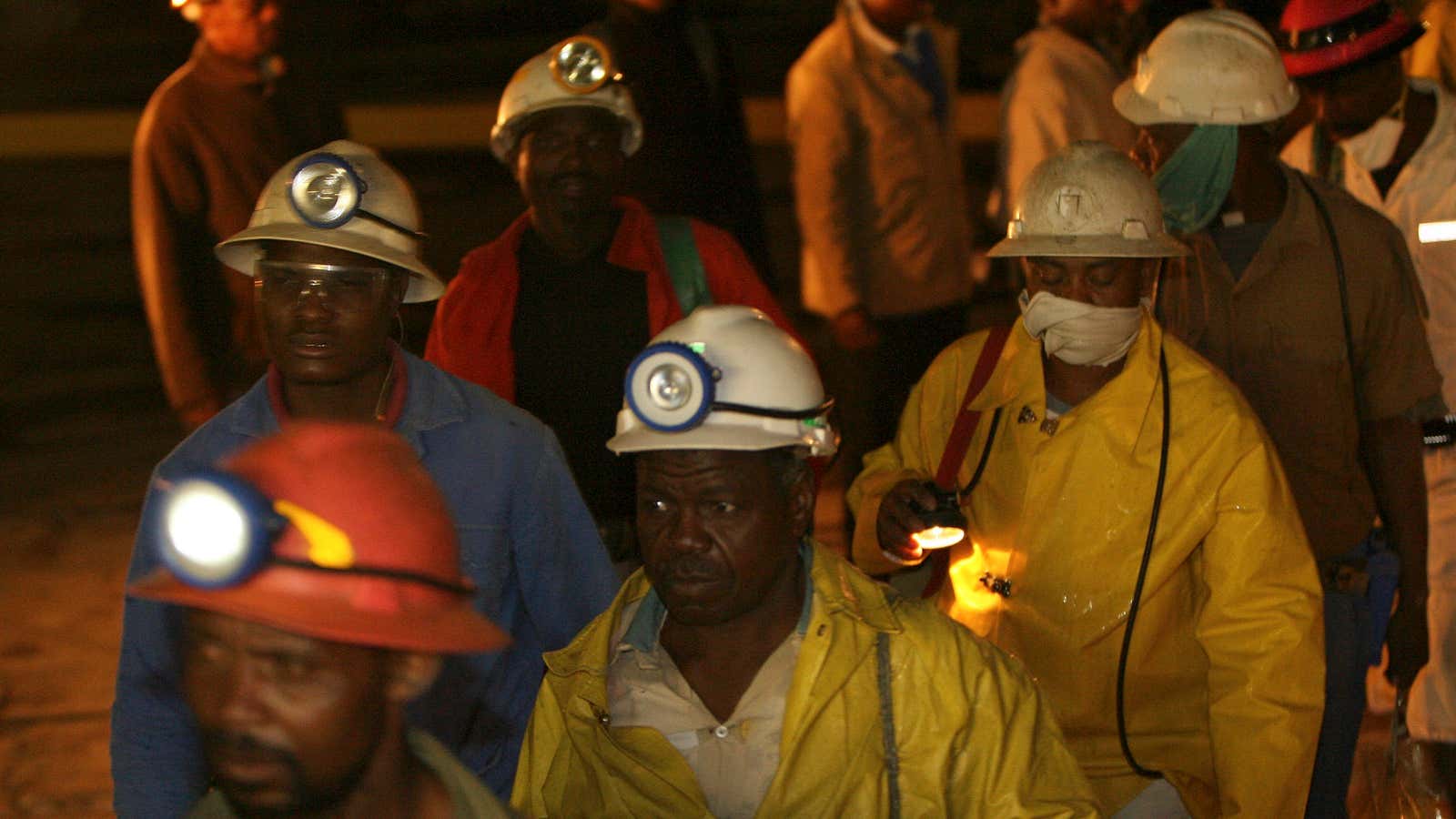For over century, the mining industry has been the bedrock of South Africa’s economy, but the industry has historically been run by a handful of wealthy white mining magnates exploiting poor black labor. Now a new policy promises to shake the industry to its core—and no one involved seems particularly happy with the proposal.
On June 17, mineral resources minister Mosebenzi Zwane unveiled the Mining Charter 2017, a new set of industry laws that promise to right the historical wrongs of the industry within 12 months. South Africa has complied with various versions of the mining charter since 2002. The document represents a set of objectives that must be met in order to transform the industry.
This latest one, however, has gone the furthest to change the demographics of the mining industry. For starters, it requires that all mines have 30% black ownership, an increase from 26%. And it outlines clear quotas at the various levels of leadership within mining companies:
- Board: minimum 50% black representation, 25% of which must be female
- Executive: minimum 50% black representation, 25% of which must be female
- Middle Management: minimum 60% black representation, 30% of which must be female
- Junior Management: minimum 88% black representation, 44% of which must be female
A further 8% of shareholding must be allocated to the communities surrounding the mines, which will be managed by a trust.
The charter is in line with the Zuma government’s favorite new policy slogan, radical economic transformation. The approach is an attempt to address South Africa’s shocking inequality and failure to make good on Mandela era-promises to end racialized poverty.
“We engaged financial institutions who need to make profit, but also address developmental needs,” Zwane told journalists. “We also listened to the sector who asked for policy certainty, but also wanted clarity on historic deals.”
That assertion doesn’t jibe with the account from the Chamber of Mines. The industry body didn’t even show up to what representatives said was a last-minute meeting, planned just hours before Zwane revealed the new charter to the public. As far as the chamber was concerned, the Mining Industry Growth Development and Employment Task Team, the organization under which Zwane was to consult with the chamber, was “dormant” (pdf) for well over a year.
“The notice for the meeting is less than 24 hours and the exact purpose of using MIGDETT [the Mining Industry Growth Development and Employment Task Team] is highly suspicious,” the employer’s association said in a statement (pdf).
Employees were equally disenchanted with the proposed charter. The National Union of Mineworkers, the largest mining union, plans to oppose the clause in the charter which allows naturalized citizens to qualify for Black Economic Empowerment, South Africa’s national affirmative action policy to address apartheid’s inequalities.
The markets also reacted negatively to Zwane’s proposal. The rand lost 2% and listed mining firms saw their profits shaved, another blow to the already struggling industry. While the charter was supposed to provide much-needed clarity on the direction of the industry, it seems to be causing further uncertainty, economists said.
The industry’s suspicion of Zwane has some precedent. Since taking office in a cabinet shuffle in 2015, his name has been linked to the controversial Gupta family. He was accused of personally intervening to ensure the wealthy family’s purchase of a coal mine in 2015, which went on to supply the state power company Eskom. Zwane has dismissed the allegations, as he has the new criticisms of his charter.
